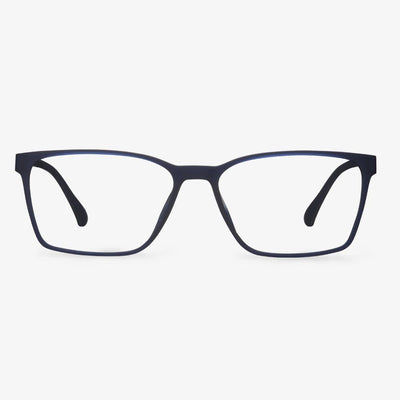What To Do with Old Glasses?
You can also choose to send your old glasses to others. You can ask your friends or ask around your social network to see if someone needs a pair of glasses. Then give them the old glasses.
If your glasses are too broken to be redistributed, do not just throw them out. You can choose to throw your old glasses into the recycle bin and they will be recycled.
If the only reason to give away your old glasses is that they are broken, you can try to repair them. After that, they can be useful.
How to determine whether progressive lenses are worn correctly?
Once your glasses are back from the lab, the optometrist will let you put them on for an audition and make final adjustments to make sure they fit. If the prescription is not in the center of the lens, it will make it difficult for you to see clearly. The key is that the lenses match the wearer's eyes, especially the pupils. Before ordering a new lens, the optometrist takes two measurements: pupil distance and fitting height.
What Do Trifocal Lenses Do?
Trifocal glasses can provide correction for some eye conditions including presbyopia and cataracts. Presbyopia often occurs in people who are between the age of 40 and 60. People’s eyesight starts to deteriorate and they are unable to focus at near. Wearing trifocal glasses can help correct blurred vision, eye strain, and headaches. The trifocal intraocular lens placed during cataract surgery can also resolve cataracts.
From above, you have learned some information about trifocal lenses. But what are the pros and cons of trifocal lenses? So, in the following section, we will focus on the advantages and disadvantages of trifocal glasses.
Contact Lens Materials - Non-HEMA materials
The non-HEMA materials are hydrophilic soft lens material, which does not contain HEMA components. They are stronger and more oxygen permeable than most HEMA polymers.
The water content of regular hydrogel lenses varies from 30% to 58%. When oxygen passes through the hydrogel, it needs to be carried by water molecules in the material. Therefore, the higher the water content of the lens, the higher the oxygen permeability value. The softer the lens, the more comfortable it is to wear, which is conducive to the metabolism of the cornea. However, at the same time, the higher the water content of the lens, the faster the water evaporation, easy to dehydration, and easy to cause dry eyes. A lens with high water content has low material density, poor durability, and easy breakage, so they are suitable for making lenses that are frequently changed or discarded. On the contrary, the lens with low water content has good formability, easy operation, durability, and is not easy to dehydrate and cause dry eyes.
The working principle of driving glasses
The driving glasses are designed according to the polarized angle and radian of the lens and the principle of precision optics. It can only let the beneficial light pass through, and other light sources, like strong sunlight, car headlights, and other light sources are filtered, to eliminate the interference of external light, and avoid the appearance of eye-catching, dazzling, and other situations. That's basically how the driver glasses are designed.
The Benefits of Anti-Glare Glasses
As is well known, glare is the excessive brightness caused by direct light or reflected light. It often occurs when sunlight bounces off a reflective surface like water or snow. Of course, anti-glare glasses can also be caused by other factors.
Standard plastic lenses are able to reflect approximately 8% of the light that reaches your glasses and high-index lenses often reflect up to 12% of available light. Hence, anti-glare glasses come in a lot of advantages.
The anti-reflective glasses can reduce eye strain and make your eyeglasses look more attractive because the anti-reflective coating can eliminate reflections from the front and back surfaces of your eyeglass lenses. With this feature, more light can pass through your lenses to improve your vision with fewer distractions and the lenses look nearly invisible.
In addition, anti-glare glasses are helpful to high-index lenses, which reflect more light than regular plastic lenses. In general, the higher the index of refraction of the lens material, the more light will be reflected from the surface of the lenses.
Anti-glare glasses can protect your eyes from UV rays (sunlight that doesn’t appear on our visual spectrum). This feature can be enhanced by some photochromatic or polarized lenses.
Wear glasses normally after being fitted with glasses
If you have myopia and have been diagnosed as true myopia at the same time, and the degree is above 0 degrees, you should wear suitable myopia glasses for correction. Once equipped with glasses, you should wear them except for washing your face and sleeping, because myopia patients are in a state of emmetropia after wearing suitable glasses, and the natural relationship between adjustment and convergence is restored. Wearing glasses is not only to improve eyesight, but also to read and work within an appropriate distance, so that there is a normal coordination relationship between the adjustment of the eyes and the convergence function, and to avoid eye fatigue.


















































